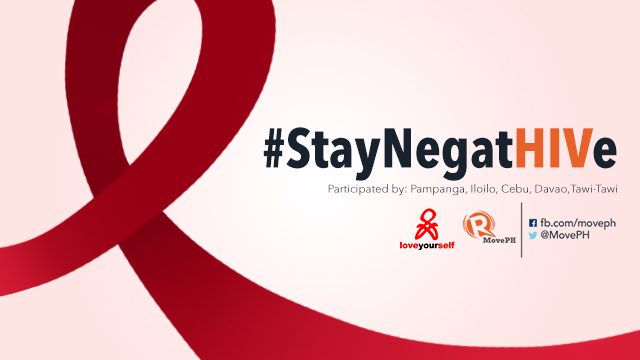 Thousands of Syrian refugees are suffering and dying across Europe and the Philippine Government must play an active role in helping them. For several years, the Philippines has not known any huge role in foreign affairs aside from creating a fuss with the South China Sea. While the dispute helps concretize our sovereignty over uncertain waters and territories, we do not have an active role in aiding countries elsewhere.
Thousands of Syrian refugees are suffering and dying across Europe and the Philippine Government must play an active role in helping them. For several years, the Philippines has not known any huge role in foreign affairs aside from creating a fuss with the South China Sea. While the dispute helps concretize our sovereignty over uncertain waters and territories, we do not have an active role in aiding countries elsewhere.
Whatever the reason for the lack of initiative, whether that be a greater focus on local politics or limited government funds, we have to stress the importance of becoming an important player in global issues. The Philippines is but a dot in the world map for many countries across the world, however, by dipping our toes into the crisis in Europe, we can place ourselves at the center of world affairs as the country that has made all the difference.
The crisis in Europe shows a lack of concern by European leaders. While Germany promised to take their fair share of refugees and lobbied for its neighbors to do the same, political red tape, inaction and even racism and discrimination blocked off efforts for a coherent plan to address the current situation.
Hungary and other countries refused refugees on the idea that European has “Christian roots” and that a cultural and religious divide prevents them from taking in the migrants. However, accepting only “Christian” refugees show that there is no religious divide but instead, discrimination of those who are not “European” to begin with.
The viral photo of the drowned Syrian boy called the attention of the global community. But, no one wants to take an active role simply because of the thought that a European crisis matters to Europe only. While the distance of the crisis does alienate most countries from taking an active role, there are other ways to help aside from accepting refugees (although accepting a fair share will help a lot). States can lobby European countries to do their part in alleviating the crisis. In addition, a generous amount of aid will help those refugees struggling in camps that are in the Middle East and even in Europe. There are no excuses for inaction.
Why help
The Philippines, in its history, helped refugees in the past. We accepted Vietnamese, Russian, Jewish, and Rohingya refugees, and they repaid us back with more than what we have offered them in aid.

For example, former Vietnamese refugees donated millions to help those affected by Typhoon Haiyan (Yolanda). Whatever acts of kindness we showed before, we have been repaid and remembered well for. Filipinos are talented in many fields such as sports, academics and the arts. But, if there is anything we need to show the world is that we Filipinos also have a heart.
Many skeptics will cite the fact that our government cannot even help all of our countrymen, so how will they help the refugees. Others will vehemently reject the idea because our taxes should only go to Filipinos and not to foreigners.
But, as a people, we must remember that before we are Filipino, Christian, Muslim or anything else, we are first human. We roam the streets crying for the separation of Church and state, asking for the abolition of the RH Law, rejecting divorce, same-sex marriage and abortion for religious reasons. But, wouldn’t it be hypocritical to say we reject our fellow brethren abroad for our own selfish reasons? The Christian faith, which a majority of Filipinos believe in, revolves around compassion for others before our own needs. Political and personal needs should be set aside.
To the president
President Benigno "Noynoy" Aquino III, if you are reading this now, I humbly ask you to participate actively in helping these refugees in Europe and the Middle East.
The Philippines government should consider improving its foreign policy abroad by helping the refugees in Europe through 3 ways: directly accepting refugees into the country and integrating them into Philippine society, actively lobbying European governments to allow safe passage and settlement through their borders for the refugees and or providing assistance with on the spot aid workers or donating a share to lighten Europe's financial burden.
The first one is the most controversial but the one that will directly affect the lives of the refugees. Integration and financial burden will accompany them into the country – with heavy resistance, but if the government has enough initiative into caring for the refugees, this is the best option. Empirically, migrants never steal jobs of local workers and actually contribute to diversity, culture and the economy. But, common fallacies that still unfortunately prevail will wall off any efforts of this kind. However, there is no monetary value to human life.
The second option is easier to accomplish but will create a huge failure is the lobbying is weak or ineffective. The casualties resulting from failed lobbying and deadlocks from policy makers can cost thousands if not millions of lives. The greatest example of the former is the Rwandan genocide where lobbying by certain policymakers vetoed any potential efforts to prevent a massacre of almost 800,000 Rwandans. The last option is the safest and has moderate gains. The refugee crisis is forecasted to cost Germany alone 10 billion euros.
Financial aid will go along way to helping European governments shoulder these painful expenses. Whatever option the Philippine government decides, it should take preemptive action before learning from hindsight. Henry Kissinger did say that action in foreign policy should always be done before the event and not cleaned up after the mess was made. The worst the government of europe, the Philippines and we as global citizens can do is nothing.
I can go over a hundred reasons why accepting refugees will be beneficial for the economy, for our culture and even for our dignity as Filipinos. But, more importantly, I hope you realize that before you were president, before you even entered politics, and before you were even signed a Filipino, you are human like them. - Rappler.com
Sign the petition to ask the Philippine government to help the Syrian Refugees.
Josh Ahyong, a graduate student at the Johns Hopkins University School of Advanced International Studies (SAIS) in Washington, DC majoring in International Relations and Economics, hopes to work for the United Nations or the World Bank and help address issues such as poverty and conflict. He is from Mandaluyong City.
 When I think of Senator Grace Poe’s chance of winning the coveted top post of the land, I am reminded of the Greek philosopher Heraclitus who once said: “Good character is not formed in a week or a month. It is created little by little, day by day. Protracted and patient effort is needed to develop character."
When I think of Senator Grace Poe’s chance of winning the coveted top post of the land, I am reminded of the Greek philosopher Heraclitus who once said: “Good character is not formed in a week or a month. It is created little by little, day by day. Protracted and patient effort is needed to develop character."







 On September 22-23, 2015, Senior Disaster Management officials of member economies to the Asia-Pacific Economic Cooperation (APEC) will meet in Iloilo City in order to discuss disaster concerns and issues on disaster management to explore ways for cooperation.
On September 22-23, 2015, Senior Disaster Management officials of member economies to the Asia-Pacific Economic Cooperation (APEC) will meet in Iloilo City in order to discuss disaster concerns and issues on disaster management to explore ways for cooperation. 






 2013 was the most devastating year in recent Philippine history in terms of natural disasters. It was the year we experienced something we had never experienced before.
2013 was the most devastating year in recent Philippine history in terms of natural disasters. It was the year we experienced something we had never experienced before. 



 A deluge of climate refugees will be yet a new challenge, if world leaders fail to forge an ambitious, robust, and binding global climate deal in Paris this December.
A deluge of climate refugees will be yet a new challenge, if world leaders fail to forge an ambitious, robust, and binding global climate deal in Paris this December. 












